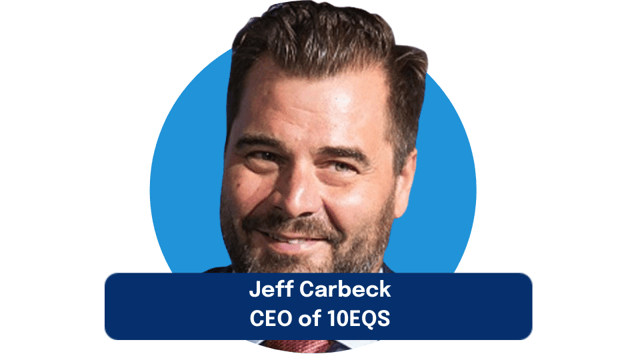Assessing Markets is Product Management

Jeff Carbeck, CEO of 10EQS, discusses how he assesses market opportunities, evaluates competition, and develops product roadmaps.
Jeff began his career as a chemical engineering professor at Princeton before starting four successful businesses of his own. After eight years of growing those companies, Jeff joined Deloitte to build a growth and innovation strategy practice that helped large companies launch new ventures.
According to Jeff, we’re not short of interesting ideas or opportunities. Rather, the challenge is determining the robustness of opportunities and then making decisions about the few important investments.
One of the most important lessons that Jeff has learned from his experience as an entrepreneur and strategy consultant is that the most valuable insights come from people in the market. Don’t go to market with a pre-determined solution, He says. Consumers have a spectrum of needs, and you need to understand the relative importance of those needs and how well your solution stacks up against the competition. He recommends talking to people about problems and solutions they wish they had and are willing to pay for.
When evaluating a market opportunity, Jeff considers what he calls the “robustness” of the opportunity. Robustness encompasses the need for a solution, whether the need is broad or acute, and the long-term sustainability of demand.
Once a market need is validated, Jeff assesses the go-to market strategy’s robustness, which he describes as the diversity of opportunities to capture a given market and achieve a positive return on investment.
Jeff might still invest in an opportunity if the needs or go-to market strategy are not incredibly robust, but it is riskier. So he does the bulk of his investing in opportunities with robustness in these dimensions.
Based on the incredible success of companies such as Airbnb and Amazon, we generally think that disruptors will edge out incumbents if they have an innovative solution to a market need. But Jeff gives a useful counter-example of a new wood treatment offering.
A disruptive startup had an insight that consumers want to save time by buying pre-treated wood. However, the startup hadn’t appreciated that customers need a broader range of functionality. The disruptor wasn’t able to provide pre-treatment for every permutation of wood type, size, and varnish. The incumbents understood these market dynamics, however, so when they launched a solution, they won.
Jeff’s firm has a unique delivery model that increases speed and quality of insights. The company custom sources consulting teams for each client. Jeff doesn’t think that consultants should come in to organizations and give orders. Instead, they should organize themselves to be aligned and to augment existing capabilities. There is no one person with one answer to one question that will solve everything. Engage a broad range of individuals with different roles and insights and capturing those in collective, iterative way until you start to be able to converge on an answer, Jeff says.
You’ll learn a lot from this episode about assessing market opportunities and developing go to market strategies.
Here are the highlights:
- How Jeff gets started with a market assessment (5:40)
- Factoring consumer behavior and decision making into market analyses (8:42)
- Picking strong opportunities for innovators (16:15)
- How Jeff turns market insights into products and features (19:10)
- Why speed is so important in the modern business environment (21:12)

Subscribe now!
Get our new reports, case studies, podcasts, articles and events
